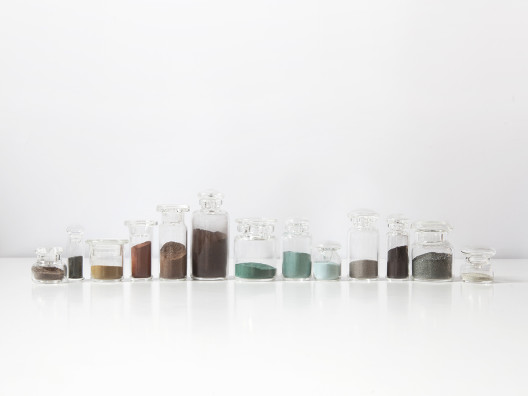From dust you came (and to dust you shall return)
From dust you came (and to dust you shall return) nasce dal tentativo di ricavare un nuovo pigmento grattando la superficie di una fotografia. Nel suo manifesto The first man was an artist, Barnet Newman afferma che le prime rappresentazioni umane furono primariamente un grido artistico. I primi pigmenti estratti dall’uomo erano in effetti terre, usate nelle pitture rupestri, come dimostrano le grotte di Lascaux. Con questa azione cerco di chiudere un cerchio, riconnettendo la mia pratica a quel grido originario: cominciammo dal pigmento naturale a rappresentare il mondo. Il mio nuovo pigmento porta con sé questa natura atavica e contemporaneamente tutti i detriti della nostra era, che ne rappresentano una qualità intrinseca. La polverizzazione del mio archivio fotografico familiare trasforma la memoria privata in memoria collettiva. Il pigmento che ne nasce può generare nuove forme di rappresentazione, in un ciclo infinito, ricordandoci al contempo la fragilità e la transitorietà della specie umana. I nostri archivi sono così riposizionati in un dibattito postumano e multispecie, in un pianeta attraversato da relazioni e storie che ci precedono e ci sopravvivono.
[fotografie grattate; fotografie polverizzate in vetro, sculture in resina e marmorina, video installazione]
password: dustdust
–
[ENG]
From dust you came (and to dust you shall return) represents the attempt to obtain a new pigment by scratching the surface of a photograph. In his manifesto The first man was an artist, Barnet Newman states that early human representations were primarily an artistic lament. The first pigments extracted by man were in fact soil colors, used in cave paintings, as demonstrated by Lascaux. With this action I try to close a circle, reconnecting my practice to that original lament: we started with the natural pigment to represent the world. My new pigment carries with it this atavistic nature and at the same time all the debris of our times, which are its intrinsic quality. The pulverization of my family archive turns my private memories into collective ones. The pigment that emerges generates new forms of representation, in an endless cycle. It reminds us of the fragility and transience of the human species. Our archives are repositioned within a posthuman, multispecies discourse—on a planet threaded with relationships and histories that precede us and will outlast us.
[scratched photographs; pulverized photographs in glass; video installation]
password: dustdust


